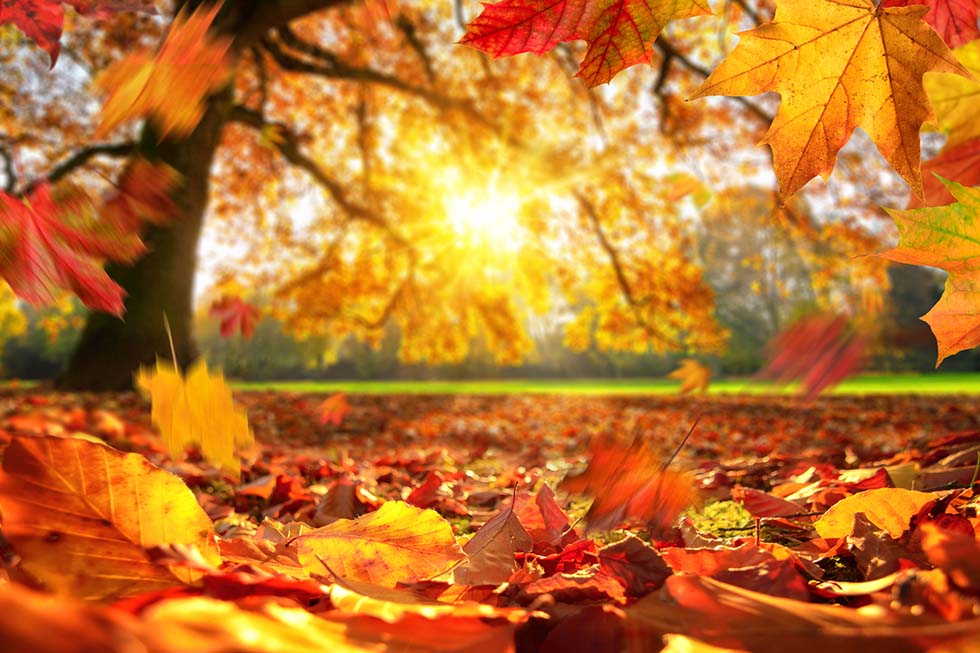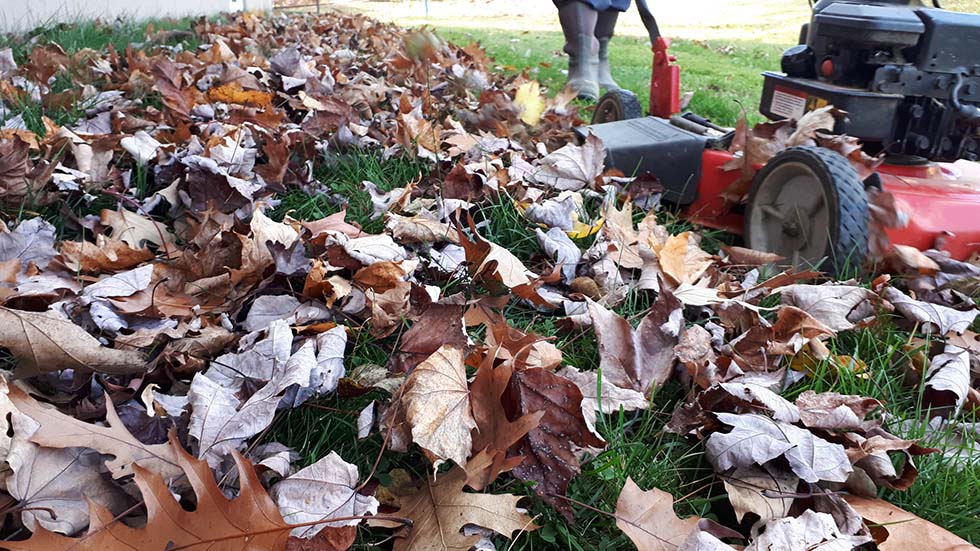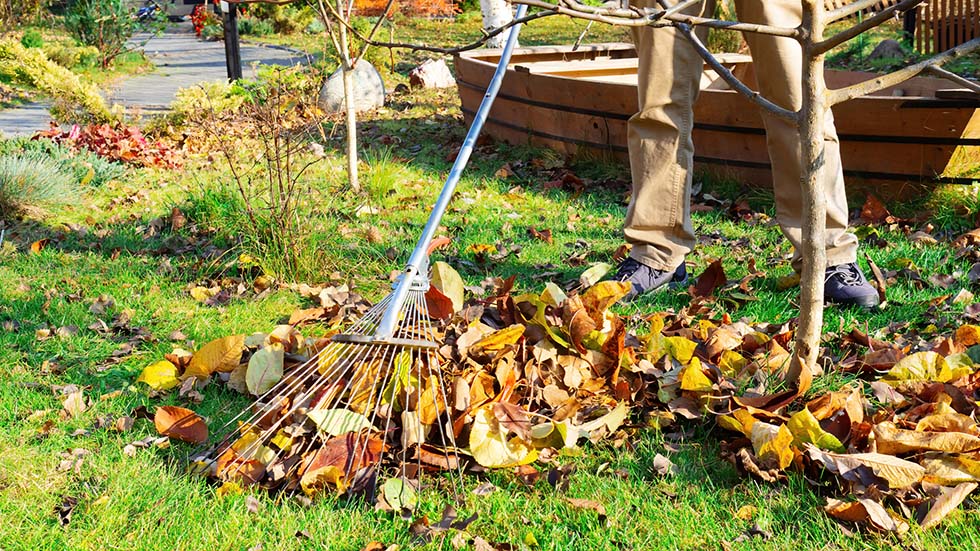
Many are excited to welcome fall’s brisk temperatures and the changing colors outdoors. Autumn’s first leaves are beginning to fall, and soon many lawns will be covered in a blanket of red, orange, and yellow.
The questions on the minds of many homeowners this time of year are "What should I do with the leaves?" There are many opinions on the matter, and today we are going to share what we know when it comes to fall foliage clean up.
Option #1:
The first option is to do nothing and allow the leaves to pile on top of the grass. Depending on the amount and size of individual leaves, this may not be a good option. Left whole, leaves create a sunlight barrier to the turf beneath. Furthermore, the moisture caught between a covering of leaves and grass is a perfect breeding ground for disease and harmful pests. It’s important that turfgrass has adequate access to sunlight, moisture and other nutrients during the fall and into the winter.

Option #2:
The next option is to simply mow over the leaves to create natural mulch. This is extremely easy to do, and it offers many health benefits to the lawn. If practical (again, depending on the amount and size of individual leaves), this is what we recommend. Natural mulch made of fallen leaves can enhance the lawn’s fertility and provide protection. Both the soil and the grass benefit from the natural compost. Special attachments and mulching mowers made especially for this application are available on the market, but the job is done just as well by simply removing the catcher from any lawn mower. Mow over the fallen leaves a few times until the leaves are mulched into coin-sized pieces and the grass beneath it peeks through.
Adding fertilizer to this process is a great way to make it even more effective and healthful to the grass; fertilizing in combination with natural mulching is a great way to prepare any lawn for the coming winter. We suggest applying Lawnifi® Boost in the early fall, Lawnifi Maintain in mid-fall and Lawnifi Recover in late fall as the final step in winterizing your lawn; the application process for Lawnifi products is very simple and the results long-lasting.

Option #3:
If the idea of a mulched lawn does not appeal to your aesthetic liking, the third option is to rake or use a blower to gather and bag the leaves. Leaves can be used to mulch beds or placed around the bases of trees. To get rid of the leaves altogether, they can be added to a compost pile or packed into bags purchased at any home improvement store and left roadside for pickup. There are a few downsides to this option, though. It is by far the most labor intensive, the turfgrass will miss out on the natural (and cost-free) nutrients provided by the leaves and bagging leaves is the least environmentally friendly option.
Option #4:
An obvious and fourth option is a combination of options two and three. Remove the majority of early fallen leaves for atheistic purposes and bag and/or mulch leaves for the remainder of the year.
As the autumn season is still in its early stages, now is the time to be thinking about how you will handle the leaves that will soon cover your lawn. If you traditionally spend hours raking and bagging, give the mulching approach a try this year as a change that will reap many benefits. For more ideas, check out these Fall Lawn Maintenance Tips.
